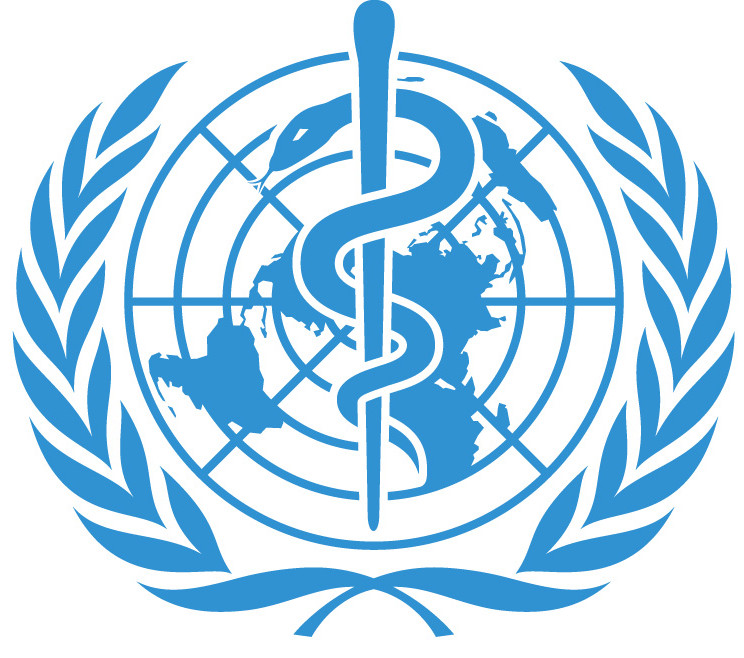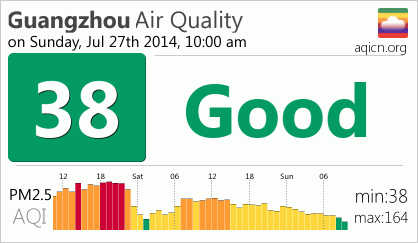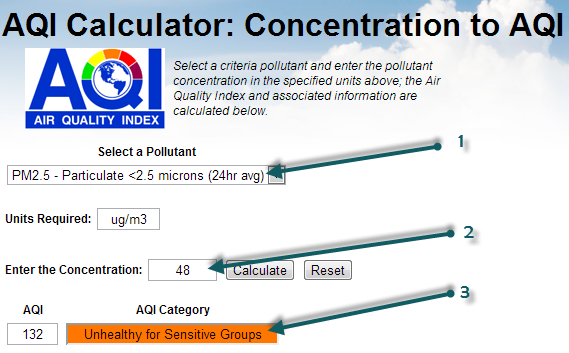Веома често добијамо упите корисника који се питају о бројевима објављеним на пројекту Светског индекса квалитета ваздуха и питају се о разлици са вредностима израженим на другим веб локацијама. И то је заправо нормално, пошто бројке, које се такође називају индекси квалитета ваздуха (АКИ), могу бити веома збуњујуће за почетнике. Последња порука коју смо добили је следећа:
Проверавамо индекс квалитета ваздуха за Тиањин у Кини од прошле године, међутим открили смо да подаци имају тако велику разлику између ваше веб странице и друге званичне (аир.тјемц.орг.цн) која је наведена и на вашој. Питам се који може дати тачније податке, јер ће то утицати на одлуку за спољашњи или унутрашњи простор. Молим вас помозите ми са овим проблемом. Хвала вам!
Раније смо писали доста о овом проблему, на пример из упоредних података ПМ 2.5 за Шангај , Сингапур ПСИ и ПМ 2.5 АКИ , а недавно и о тренутном времену .
Али, пошто још увек добијамо многа питања, сада пишемо овај чланак да бисмо објаснили разлику АКИ скала које се користе широм света.
Први део овог чланка ће се фокусирати на Кину, а други део ће проширити поређење на скале које се користе у Јапану, Јужној Кореји, Индији, Тајланду, Малезији, Европи, Мексику итд.
Да се вратимо на почетно питање о индексу квалитета ваздуха у Тјенђину, Кина, две слике испод су снимци Тиањинове ЕПА веб странице аир.тјемц.орг.цн. Слика лево приказује концентрацију ПМ 2,5 , а десна конвертовани АКИ.
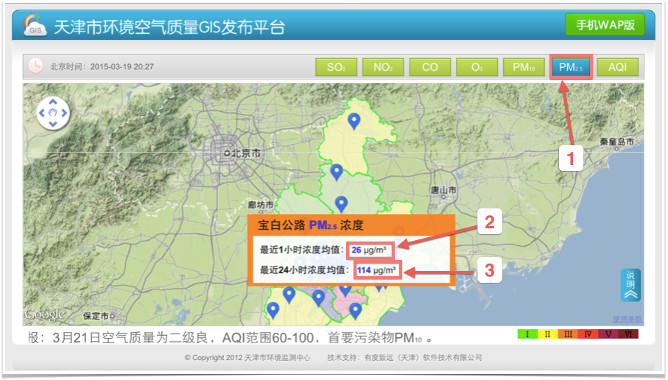 | 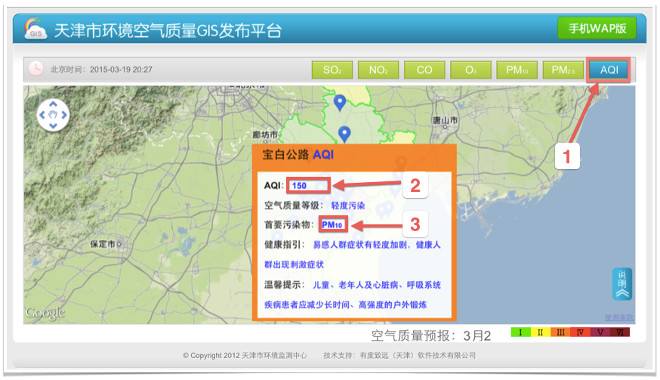 | 1 hour 2 and 24-hours 3 average PM2.5 readings 1 in µg/m3 | AQI values 2 and dominent pollutant 3 |
Почевши од слике са леве стране, вредности означене као 2 и 3 заправо нису чак ни претворене у било коју АКИ скалу, већ само обична необрађена очитавања изражена у микрограмима по кубном метру (µг/ м 3 ). Неко би могао помислити да је пружање сирових вредности чудно, али ово је заправо много чешће него што би се очекивало.
Многи бирои за заштиту животне средине (ЕПБ) широм света само обезбеђују сирове непретворене вредности.
У пројекту Светског индекса квалитета ваздуха дате су само вредности претворене у америчку ЕПА скалу. Да бисте конвертовали необрађене вредности у УС ЕПА скалу, можете само да користите аирнов калкулатор (снимак са десне стране) или нашу сопствену верзију истог калкулатора :
Коришћење калкулатора је једноставно: да бисте конвертовали, на пример, очитавања ПМ2,5, изаберите ПМ 2,5 загађивач 1 , затим унесите концентрацију масе 2 и на крају кликните на Израчунај да бисте добили одговарајућу АКИ слику 3 .
Дакле, када проверавате податке о квалитету ваздуха који се налазе на другим веб локацијама, увек пажљиво проверите податке у јединици и обавезно их конвертујте у АКИ скалу ако је изражен као сирови µг/ м 3 . Имајте на уму да је на пројекту Светског индекса квалитета ваздуха дат само АКИ заснован на 1-часовном очитавању (а не 24-часовном просеку). Ако желите да сазнате објашњење, погледајте ову објаву о тренутној емисији .
Затим, за слику са десне стране (АКИ очитања), постаје мало сложеније јер постоје различите врсте АКИ скала широм света.
Светска здравствена организација (СЗО) нуди смернице за квалитет ваздуха засноване на прегледима акумулираних научних доказа.
Али скоро свака земља има своју скалу, а то је случај и са Кином, која користи скалу познату као ХЈ 633-2012 . Она која се користи на пројекту Светског индекса квалитета ваздуха је америчка ЕПА скала . Али, пошто је графика боља од многих речи, ево две скале за ПМ 2.5 загађивач.
Најважније је приметити да за АКИ од 200 и више, две скале имају исте граничне тачке. Дакле, следећи пут, када проверавате податке о квалитету ваздуха који се налазе на другим веб локацијама, увек пажљиво проверите податке на јединици и обавезно проверите која се АКИ скала користи.
У другом делу овог чланка, писаћемо о другим скалама које се користе у свету, и биће занимљиво изненађење, као што је на пример АКИ скала која се користи за Уланбаатаар и његов опсег од 100-250 ниског загађења ...
--
За више информација о одређеним земљама или континентима, погледајте ове чланке: Тајланд и Мализија - Индија - China - Хонг Конг/Канада (здравствени индекс квалитета ваздуха) - Јужна Америка - Аустралија - Квебек и Монтреал - Сингапур - Пољска - Индонесиа .
За информације о коришћеном просечном 24-часовном просеку или озону и честицама (ПМ 2.5 ), погледајте ова два чланка: Индекс приземног озона - ПМ 2.5 Инстант Цаст
